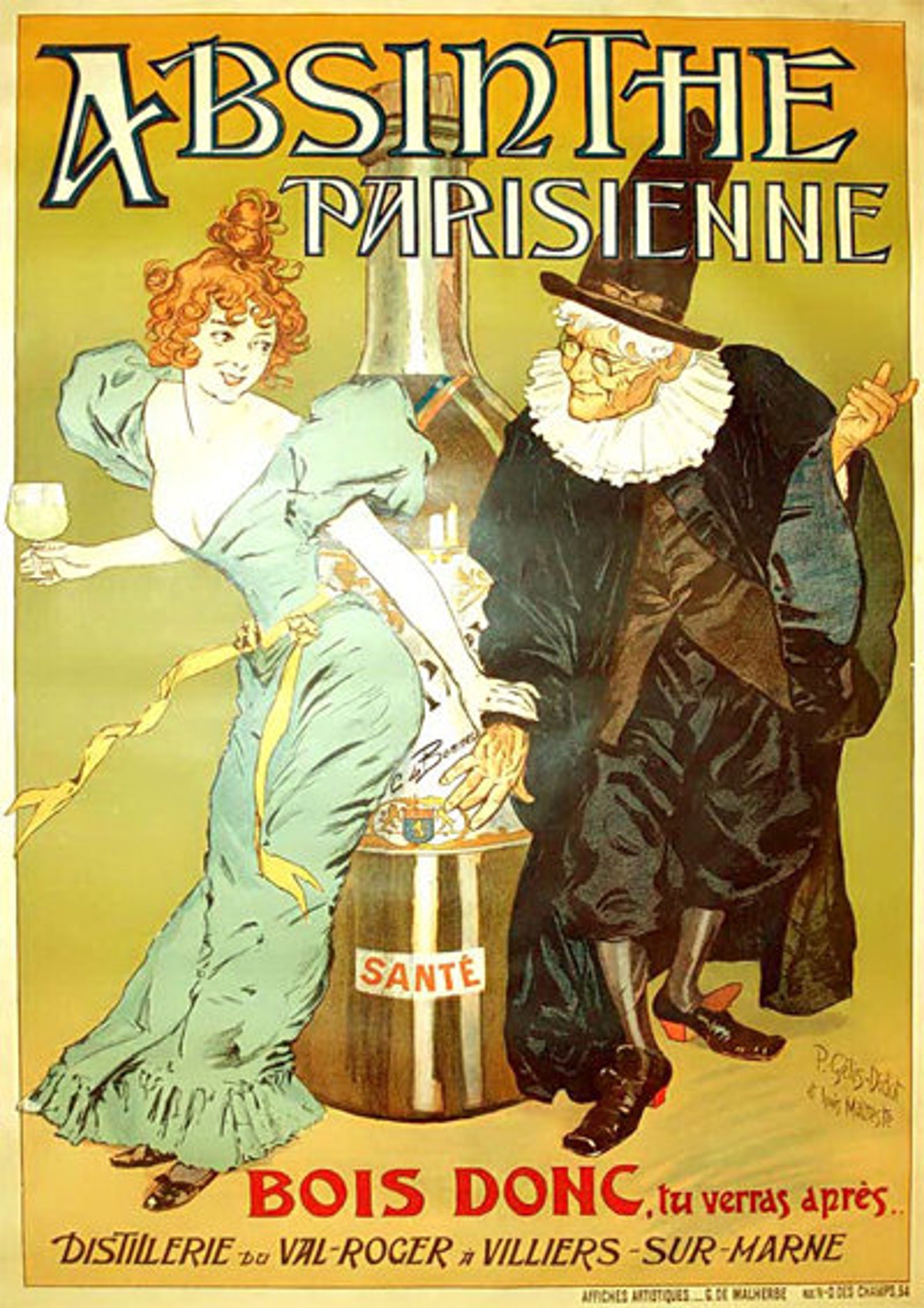

Poster artists like Henri Privat-Livemont and Leonetto Cappiello promoted a joyous and sociable vision of absinthe consumption.

Unsurprisingly, advertisements for absinthe presented a rather different image. Manet’s picture has a brutal frankness and an air of solitary desperation. Manet based the portrait on an alcoholic vagrant he knew called Collardet, who hung around the Louvre area of Paris. Édouard Manet’s The Absinthe Drinker is a moody evocation of urban low-life. See some of the art made under the influence or inspired by absinth! Absinth in art: Édouard Manet, The Absinthe Drinker, 1867-1868, Statens Museum for Kunst, Copenhagen, Denmark. From the outset, the fiery spirit divided opinion: it was loved by bohemians like Baudelaire, Picasso and Joyce, but loathed by temperance campaigners who feared its corrupting influence and wanted to ban it from public sale. Derived mostly from the leaves of Artemisia absinthium (wormwood), absinthe became known as la fée verte (“the green fairy”), due to its frequent green coloration. In order to overcome this bad publicity, the Cusenier family innovated by creating a so-called beneficial absinthe: Absinthe Oxygénée which this poster advertises.Ī man in a bar with Art Nouveau decoration, prepares the ritual of absinthe à la française: the absinthe is in the bottom of the glass, a perforated absinthe spoon.Since becoming popular in late 19th century France, in the era of Art Nouveau, absinthe has always had a certain mystique. This doctor, also an apothecary, created a miracle cure "the Green Fairy" which was in fact an elixir of absinthe recommended to treat epilepsy, gout, worms, kidney stones, colic and headache.Īround 1800, a Swiss trader bought the recipe with the idea of ?marketing it as an aperitif drink.Įugene Cusenier, seeing the success of this drink, founded a distillery of absinthe in the Doubs in 1855.īut it was also in the 1860s that the first articles related to absinthe abuse (absinthism) were published. If there are imperfections they are marginal and imperceptible.įrancisco Nicolas Tamagno is an Italian painter and poster artist, active in France between 18.Ībsinthe seems to have been invented in the late eighteenth century by a doctor from Franche-Comté, a native of Doubs, Dr. The colours are fresh and there are no or very few paper losses. Designates a poster in very good condition. Materials and Techniques: Colour lithograph on paperĬondition: A.

Title: L’Absinthe Cusenier Oxygenée - C’est ma santé Original Vintage Poster created by Fransisco Tamagno for Absinthe Cusenier advertising in 1896. Because thujone, and thus Absinthe, could cause such severe and lingering mental dysfunction, the drink was banned in most countries by the early 1900s. In the case of Absinthe, the culprit was thujone, a toxic oil found in wormwood, one of the drink's main ingredients. But also like many hallucinogens, it contained chemicals that were not particularly healthy. The drink was nicknamed the green 'Muse' because, like many hallucinogens that came after it, Absinthe gave the imbiber the real or imaginary impression of heightened sensitivity. Probably Livemont's most recognized work and the poster most associated with Absinthe, the poster succeeds, like the drink itself, by combining reality and illusion.Ī licorice-flavored, green liqueur, Absinthe was created in the late 1700s and became very popular by the beginning of the next century. The intoxicating effect of the drink is implied in the rising vapor which curls in classic Art Nouveau style and adds to the mystical awe of the poster. In his green-tinted poster, Livemont immerses the viewer in the liqueur with his subtle choice of color and expert graduations and blends. About Privat Livemont, a skilled lithographer, designed this poster for Absinthe Robette in 1896.


 0 kommentar(er)
0 kommentar(er)
